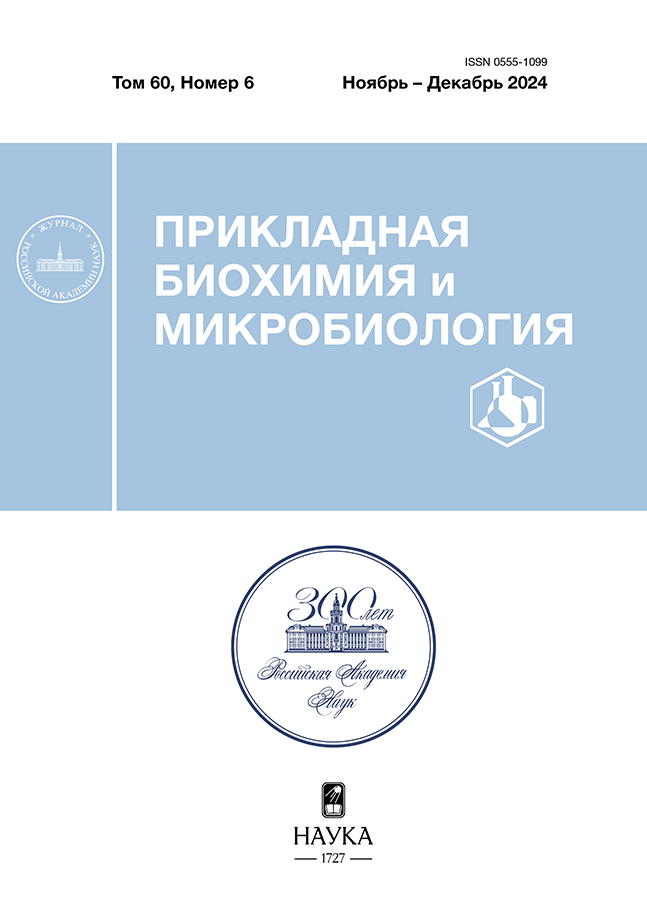New Acacetin Glycosides and Other Phenolics from Agastache foeniculum and Their Influence on Monoamine Oxidase A and B
- Авторлар: Olennikov D.N.1, Kashchenko N.I.1
-
Мекемелер:
- Institute of General and Experimental Biology SB RAS
- Шығарылым: Том 60, № 6 (2024)
- Беттер: 645-656
- Бөлім: Articles
- URL: https://medjrf.com/0555-1099/article/view/681121
- DOI: https://doi.org/10.31857/S0555109924060084
- EDN: https://elibrary.ru/QFJSVU
- ID: 681121
Дәйексөз келтіру
Аннотация
Monoamine oxidase (MAO) inhibitors are effective therapeutic agents for the treatment of neurodegenerative diseases, and natural flavonoids found in Agastache species belong to them. In the present study, six new acylated flavone-O-glycosides were isolated from A. foeniculum and identified using UV, NMR spectroscopy and mass spectrometry as agastoside A (acacetin 7-O-(2′′-O-malonyl)-β-D-glucopyranoside), B (acacetin 7-O-(4′′-O-malonyl)-β-D-glucopyranoside), C (acacetin 7-O-(2′′,6′′-di-O-malonyl)-β-D-glucopyranoside), D (acacetin 7-O-(4′′,6′′-di-O-malonyl)-β-D-glucopyranoside), E (acacetin 7-O-(2′′-O-malonyl-6′′-O-acetyl)-β-D-glucopyranoside), and F (acacetin 7-O-(4′′-O-acetyl-6′′-O-malonyl)-β-D-glucopyranoside). Using flash chromatography and liquid chromatography-mass spectrometry, an additional 34 known phenolic compounds were detected. A study of biological activity showed that A. foeniculum flavonoids had an inhibitory effect on MAO-A and MAO-B, with the greatest effect noted for acacetin 7-O-glucoside acetate and malonate esters, which may be promising compounds for the development new drugs.
Негізгі сөздер
Толық мәтін
Авторлар туралы
D. Olennikov
Institute of General and Experimental Biology SB RAS
Хат алмасуға жауапты Автор.
Email: olennikovdn@mail.ru
Ресей, Ulan-Ude, 670047
N. Kashchenko
Institute of General and Experimental Biology SB RAS
Email: olennikovdn@mail.ru
Ресей, Ulan-Ude, 670047
Әдебиет тізімі
- Lamptey R.N.L., Chaulagain B., Trivedi R., Gothwal A., Layek B., Singh J. // Int. J. Mol. Sci. 2022. V. 23. № 1851. https://doi.org/10.3390/ijms23031851
- Youdim M.B.H., Edmondson D., Tipton K.F.// Nature Rev. Neurosci. 2006. V. 7. P. 295–309. https://doi.org/10.1038/nrn1883
- Dhiman P., Malik N., Sobarzo-Sánchez E., Uriarte E., Khatkar A. // Molecules. 2019. V. 24. № 418. https://doi.org/10.3390/molecules24030418
- Chaurasiya N.D., Midiwo J., Pandey P., Bwire R.N., Doerksen R.J., Muhammad I., Tekwani B.L. // Molecules. 2020. V. 25. № 5358. https://doi.org/10.3390/molecules25225358
- Lee H.W., Ryu H.W., Baek S.C., Kang M.-G., Park D., Han H.-Y., Kim H. // Int. J. Biol. Macromol. 2017. V. 104. P. 547–553. https://doi.org/10.1016/j.ijbiomac.2017.06.076
- Абрамчук А.В., Карпухин М.Ю. // Аграрный вестник Урала. 2017. № 2. С. 6–9.
- Nechita M.-A., Toiu A., Benedec D., Hanganu D., Ielciu I., Oniga O., Nechita V.-I., Oniga I. // Plants. 2023. V. 12. № 2937. https://doi.org/10.3390/plants12162937
- Vogelmann J.E. // Biochem. Syst. Ecol. 1984. V. 12. P. 363–366. https://doi.org/10.1016/0305-1978(84)90067-X
- Чумакова В.В., Попова О.И., Чумакова В.В. // Растит. ресурсы. 2011. Т. 47. С. 51–55.
- Olennikov D.N., Kashchenko N.I. // Agronomy. 2023. V. 13. № 2410. https://doi.org/10.3390/agronomy13092410
- Olennikov D.N. // Separations. 2023. V. 10. № 255. https://doi.org/10.3390/separations10040255
- Olennikov D.N., Kashchenko N.I. // Appl. Biochem. Microbiol. 2023. V. 59. P. 530–538. https://doi.org/10.1134/S0003683823040099
- Olennikov D.N., Chirikova N.K. // Chem. Nat. Compd. 2019. V. 55. P. 1032–1038. https://doi.org/10.1007/s10600-019-02887-1
- Olennikov D.N. // Chem. Nat. Compd. 2022. V. 58. P. 816–821. https://doi.org/10.1007/s10600-022-03805-8
- Seo Y.H., Kang S.-Y., Shin J.-S., Ryu S.M., Lee A.Y., Choi G., Lee J. // J. Nat. Prod. 2019. V. 82. P. 3379–3385. https://doi.org/10.1021/acs.jnatprod.9b00697
- Park S., Kim N., Yoo G., Kim Y., Lee T.H., Kim S.Y., Kim S.H. // Biochem. Syst. Ecol. 2016. V. 67. P. 17–21. https://doi.org/10.1016/j.bse.2016.05.019
- Mizuno T., Seto H., Nakane T., Murai Y., Tatsuzawa F., Iwashina T. // Bull. Natl. Mus. Nat. Sci. B. 2023. V. 49. P. 57–64. https://doi.org/10.50826/bnmnsbot.49.2_57
- Kachlicki P., Piasecka A., Stobiecki M., Marczak Ł. // Molecules. 2016. V. 21. № 1494. https://doi.org/10.3390/molecules21111494
- Itokawa H., Suto K., Takeya K. // Chem. Pharm. Bull. 1981. V. 29. P. 1777–1779. https://doi.org/10.1248/cpb.29.1777
- Olennikov D.N., Kashchenko N.I. // Chem. Nat. Comp. 2016. V. 52. P. 996–999. https://doi.org/10.1007/s10600-016-1845-7
- Norazhar A.I., Lee S.Y., Faudzi S.M.M., Shaari K. // Appl. Sci. 2021. V. 11. № 3526. https://doi.org/10.3390/app11083526
- Duda S.C., Marghitas L.A., Dezmirean D., Duda M., Margaoan R., Bobis O. // Ind. Crops Prod. 2015. V. 77. P. 499–507. https://doi.org/10.1016/j.indcrop.2015.09.045
Қосымша файлдар













